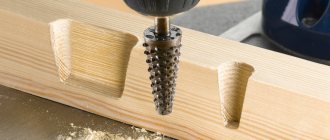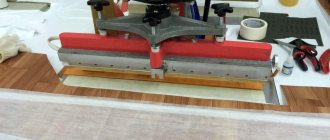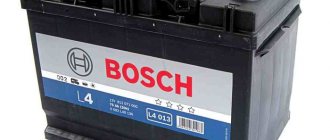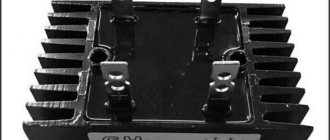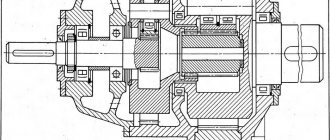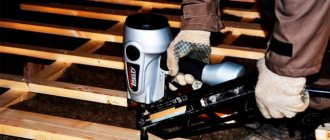Manual finishing of wood will always be relevant, even in the era of absolute automation of all production processes, because in the vast majority of cases a unique thing can only be done manually.
The basics of turning wood on a machine can be useful not only to a professional carpenter, but also to novice designers, builders, and those simply wanting to learn this ancient skill.
Working on a wood lathe, or, as they sometimes say, lathe, in general, is not particularly difficult, but you need to learn to understand how to feel the product being processed. It is then that work becomes a true art in which a person gains self-expression, realizes creativity and develops imagination.
Studying the machine: types of turning equipment for woodworking
Turning equipment is represented by a huge arsenal. The most primitive models began to be produced more than two and a half thousand years ago, then they were gradually modified and improved. During the Soviet Union, hundreds of types of turning equipment designed for woodworking were produced.
The wide range of machine types is determined primarily by the variety of wooden products. It can be different in shape, size, type, and material. For example, one machine will be needed to process a large flat surface, while another machine will be more suitable for extracting decorative type holes. For home use, of course, they strive to purchase the most universal mechanism that would allow them to process everything at once. Often they choose a complex device that allows you to work not only on wood, but also on metal. But for industrial purposes, when it comes to processing parts in large numbers, but with a standardized form, they choose professional, powerful machines, but with limited functionality. When choosing, you should pay attention first of all to the purpose of the device, and only then find out its technical characteristics and think about how suitable they are for your purposes.
The scope of use of lathes is turning packaged, cylindrical and conical shapes of rotating bodies. Consequently, only the body that rotates on a special attached device in the structure is processed. It is possible to process internal and external parts - only the clamp and cutter used are changed. Also, with the help of modern wood lathes, it is possible to make holes and use them like drills, but only if the hole is located on the axis of the part or is slightly offset along its axis. In any case, the scope of application of the equipment is wide; modern variations can be used for almost all jobs.
Wood sawing machines are the most popular and frequently used variation. This mechanism is used for sawing whole logs and workpiece surfaces. Also used to give the required shape to flat parts. Sawing machines are divided into several large subgroups:
- Sawmills are a device for performing transverse or longitudinal cutting of workpieces. Linear saws are used that rotate translationally in relation to the workpieces. It is used mainly in industrial warehouses, and not in home workshops, as it is quite bulky and large. In addition, high energy consumption does not speak in its favor - the efficiency is low;
- Circular saws operate in both manual and automatic modes. They are necessary for careful sawing of wooden blanks on vertical and inclined planes. The parts are processed using specially fixed circular saws. Depending on the quality of the saws, their power and size, the scope of use of the equipment changes;
- Belt mechanisms are also controlled manually or automatically. Their advantage is that cutting the wood occurs with linear movements of the belt. The ability to be used not only for processing, but also for giving rough shape to workpieces. Processing with belt machines is quite economical, they do not take up much space and do not require special employee skills to operate.
Planing machines are the second type. They are used to remove the outer layer using tools. One-way mechanisms can only remove edges from fairly massive products, and they only affect the upper part. Double-sided, in turn, use the upper and lower parts of the workpiece. Unlike single-sided devices, these devices are more productive, but at the same time, the work will require knowledge from the machine operator; the devices are more difficult to maintain. The planing type includes the so-called jointing options, which are chamfered at the corners.
Direct lathes can be of various types and variations - depending on the dimensions, accuracy, and type of workpieces used.
But a common classification used in production is the degree of universality and automation. According to the last parameter, the equipment is divided into:
- manual - parts are fed independently, the spindle speed is varied using manual control;
- automated - processes are controlled by an employee, but thanks to copied mechanisms, time is reduced;
- automatic are the safest and fastest devices, since work occurs regardless of the person; CNC-controlled options are popular.
Selection and preparation of workpiece
Wood belongs to the category of ornamental material that allows you to create the most bizarre and spectacular products. The beauty and originality of the crafts made depend on the type of wood chosen, the capabilities of the lathe, the skill level of the craftsman, and the accuracy of the work performed.
Work on a lathe requires careful selection of wooden blanks. Deciduous trees are usually chosen as wood. The most popular are: linden, pear, alder, oak, beech, walnut, and various types of birch. Of the rarest types of wood, red and black are used. However, it should be remembered that the basis of each of the rocks has its own characteristics that must be taken into account when processing. These features include:
- density;
- presence of original texture;
- absence of cracks and knots;
- for coniferous and some deciduous trees, for example, cherry, the absence of so-called tars;
- for coniferous species the presence of external and internal blue.
For beginners, it is advisable to choose for work well-dried blanks that have a solid structure and medium density. They are good for training on the simplest turning equipment. To acquire skills in working with wood, it is advisable to choose a product of simple design.
Types of turning: what techniques are used?
Turning is a vast field of knowledge. The specialist must choose not only the appropriate equipment, but also know the specifics of performing all the techniques. There are about a dozen main types of turning work, but it should be understood that each type of processing can concern parts of different diameters, sizes, and textures. Consequently, it is not possible to count exactly what types of turning and techniques there are. Main types of turning:
- processing of external surfaces of cylindrical shape;
- turning the outer surfaces of a conical sample;
- processing of ledges and ends of parts;
- processing the surfaces of cylinders and cubes from the inside;
- piece of workpiece;
- turning grooves and holes;
- drilling holes;
- work associated with drilling - reaming and countersinking of sides;
- cutting internal and external threads;
- processing of shaped planes;
- rolling corrugation and more.
As you can see from the list, there are many turning techniques. The worker must not only know them all thoroughly, but also be aware of the safety rules when turning or cutting certain workpieces.
What kind of cutters will be needed for the job?
There are about 15 types of cutters on a standard machine. Each of them is designed to perform a specific turning technique. You cannot use an unsuitable cutter that performs identical functions. This may give effective results, but will lead to equipment failure.
The cutters are the most important part of the mechanim. In manual and automated machines, they are replaced by a specialist with each stroke. The only exceptions are specialized options that can be configured so that the cutter is automatically changed to the required one a step or two ahead. This feature saves a lot of time. Automatic lathes change the cutter automatically, that is, without human intervention. This is very convenient, since there is no risk of injury, especially when testing functionality, and it also saves significant time and resources.
Specialized machines are equipped with several cutters, since they work with a specific shape and type of part. But universal ones are equipped with dozens of cutters with different sizes. In the largest versions there can be 15 varieties, all of different sizes. Kinds:
- straight cutter;
- thrust mechanism;
- bent through cutter;
- cut-off not passable;
- groove cutter;
- boring mechanism;
- countersink;
- drill;
- cutter for carving;
- scan;
- shaped option;
- tap;
- knurling.
Please note that the knurling cutters have a directional arrow indicating how the tooling moves when the workpiece rotates.
Safety precautions at work
Working on a lathe, regardless of experience, requires compliance with established safety rules. It doesn’t matter whether a beginner turner or a sophisticated professional is working. All safety regulations can be divided into the following categories:
- requirements for the workpiece;
- correct fixation of the blank and the procedure for turning on the machine;
- tool preparation;
- preparation of personal protective equipment.
The first category of requirements includes:
- check the integrity of the workpiece;
- no obvious defects;
- humidity level;
- compliance with the requirements for the shape of the blank (this will eliminate runout of the part).
The second list is related to work rules. Before turning on the turning unit, you must read the instructions. It describes the sequence of preliminary work, the order of switching on, operating rules and possible malfunctions. In addition, the instructions, depending on the installed fixing device, contain recommendations for the correct installation and fastening of the blank. The main requirements for turning work are:
- securely fix the blank;
- check the integrity of the power cable (it supplies high voltage to the engine);
- serviceability of the grounding cable;
- all controls must be set to their original positions;
- there should be no debris or unnecessary objects on the bed and surface of the machine;
- During turning operations, chips should be removed gradually in a thin layer (it is necessary to avoid deep penetration of the tool into the workpiece, otherwise it may be destroyed, which will lead to fragments getting on your hands and eyes);
- It is advisable to press the elbow tightly to the body (this will create additional support, allowing for improved fixation of the instrument).
All tools that are planned to be used during work must be in good condition. Handles should not have cracks or obvious defects. The cutting edge must be sharpened according to the rules.
Before starting work, you should take care of personal protective equipment. These include: a protective gown, a hat and safety glasses. Having personal protective equipment will help avoid injuries.
Basic techniques for working with the machine
Techniques for working with a lathe are required. User safety directly depends on this. Important:
- check the serviceability of the mechanism before starting work, including the fastening of parts and shields;
- Lubricate the drive shaft and screws every time you use them;
- check the filling level;
- turn on at idle speed - check the lever, trigger, caliper, speed and gears;
- monitor the guide and bed;
- Avoid abrupt switching to reverse or switching the gearbox to another mode.
Be sure to clean the mechanism upon completion of work. Remove any remaining shavings and wipe with a cloth soaked in kerosene.
Basic principles of turning
The main principle of turning is the optimal combination of two types of movements. The first is rotational, which is produced through the use of an electric motor and gear system, the second is translational, mainly manual, to supply the necessary turning tools. This operating principle is inherent in all types of lathes. It allows you to work with parts of the most complex configurations. Machining on lathes is carried out with the following types of tools:
- chisels;
- reimers;
- Meislers;
- incisors.
Each lathe has its own mounting system. It can be equipped with additional equipment that expands its capabilities for processing various types of wood.
A special tool rest is used to accurately feed the wooden blank. It allows you to install it in the required position while maintaining the required alignment. Correct and high-quality turning is facilitated by a precisely set angle at the roller.
